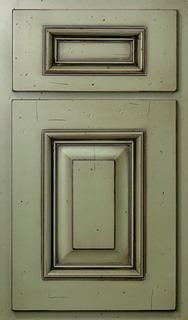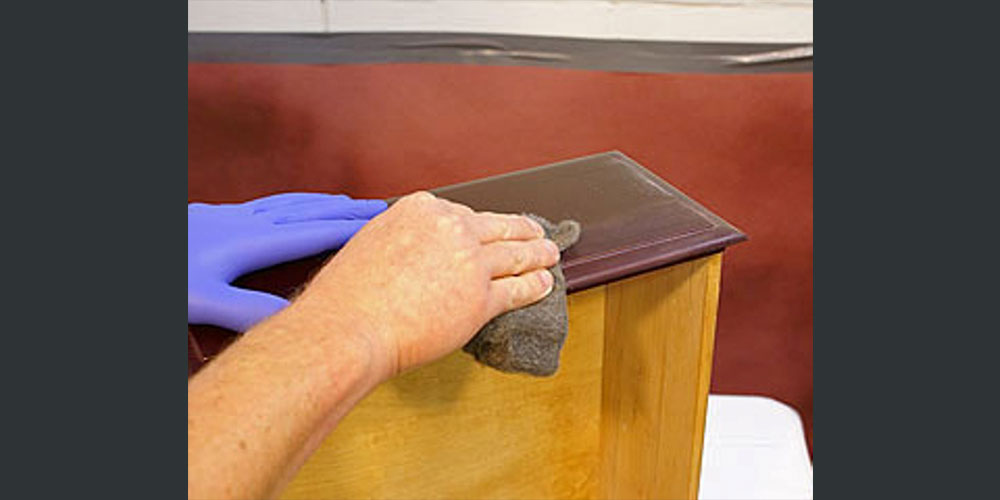Our Finish Process
Here At Saratoga Custom Cabinets LLC, our furniture is only as good as the quality finish that we use. With our state of the art products and equipment, our finish process and application procedures become a guideline for all of our projects. Prior to finishing, our furniture is beautiful, yet vulnerable. Taking something as rough as a raw piece of wood, and bringing it to life with a silk touch luster that is durable enough to endure years of wear is the very definition of refinement and craftsmanship.

Get Tomorrow’s Finish Forecast Today
When it comes to cabinet finishes, we realize the choices can seem endless. Therefore, our color forecast brochure is here to help. Taking leading influences on color and design, we examine the five major categories of cabinet styles in our world today and determine the cabinet finishes that best complement each style. Using our high performance finishes, we have applied our high-end multi-step wood finishing system to each of the five styles. The finishes selected will continue to gain popularity and the styles will be relevant far into the future.
Seven Style Spotlights
Casual Style
From simple white cabinetry and fresh hue colors to natural wood furnishings, the casual style manifests itself in a relaxed, guest-friendly ambiance with mountain charm. Expect to see plank doors or simple doors, often with bead board panels.
Look For:
- Natural and rough-hewn woods like pine, alder or maple
- Simply painted or painted, glazed and distressed cabinet finishes
- Lighter colored stains
- Decorative shelves and molding
- Antiques and flea market finds
- Handmade, hand-forged, homespun look

Old World Style
World kitchens – their large hearths or cooking grottos and distressed unfitted cabinets – trace their look to pre-17th century Europe. The finish is key; stained and painted cabinetry that displays antiquing, distressing, chaining, wormholing and cracking gives an authentic warm-age patina.
Look For:
- Raised panel cabinetry featuring elements like cracking, bead board, dish and cup racks, valence legs, flushed toes and bun feet.
- Deep, rich colors
- Stone walls and/or floors
- Pewter or copper accents
- Mosaic tiles

Traditional Style
Traditional kitchens have a formal, elegant look characteristic of American and European homes of the 18th, 19th and early-20th centuries. A traditional kitchen calls for a traditional cabinet.
Look For:
- Crown and rope molding, fluting, corbels and other ornamentation and trim
- Woods like maple, cherry, walnut and mahogany
- Deep finishes include stained, painted and glazed
- Raised panel cabinet door styles
- Antique fixtures and appliances
- Wood, stone or other natural materials

Contemporary Style
Contemporary kitchens tend to be described as modern, minimalist and sleek, containing styles from the 1940s to the present. The characteristics include horizontal clean lines, asymmetry and a lack of molding and other ornamentation.
Look For:
- Gloss/satin painted or stained cabinet finishes
- Styles from striped veneers to subtly grained woods such as birch, ash or maple
- Stainless steel, concrete and chrome accents
- From no hardware to simple brushed or polished nickel hardware for a clean, simple, high-end look

Antique Style
Antique kitchens offer an authentic character, unique dimension and visual interest. The antique style is often achieved through individual pieces, such as islands or cabinetry, designed to look like they’ve been there forever. Expect to see distressing at many levels, from nail holes to face chunking, as the means to achieve the beauty of this aged look.
Look For:
- Crackle, glazed and distressed cabinet finishes
- Wormholes, tear outs, rounded corners, dents and scratches
- Raised or shaker panel cabinet doors
- Natural materials such as stone floors and mosaic tiles
- Brick or plaster walls
- Pewter or copper accents


Crackle Style








